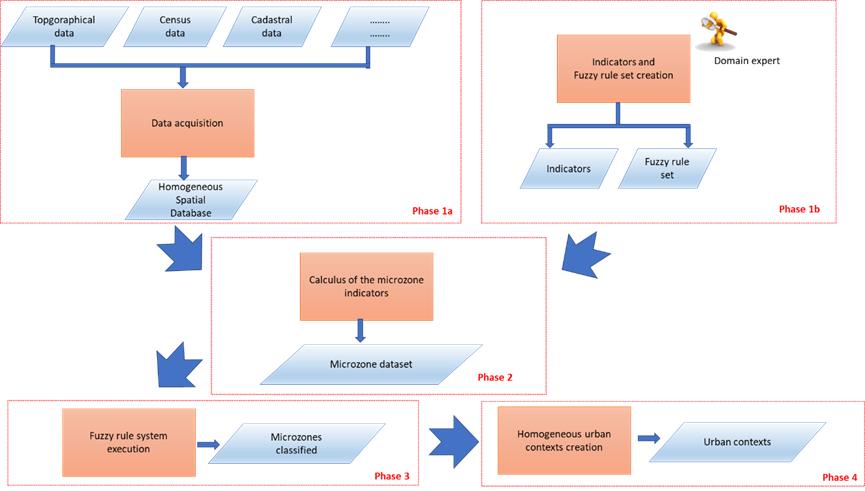We present a new unsupervised method aimed to obtain a partition of a complex urban system in homogenous urban areas, called urban contexts. The area of study is initially partitioned in microzones, homogeneous portion of the urban system, that are the atomic reference elements for the census data. With the contribution of domain experts, we identify the physical, morphological, environmental and socio-economic indicators need to identify synthetic characteristics of urban contexts and create the fuzzy rule set necessary to determine the type of urban context. We implement the set of spatial analysis processes necessary to calculate the indicators for microzone and apply a Mamdani fuzzy rule system to classify the microzones. Finally, the partition of the area of study in urban contexts is obtained by dissolving continuous microzones belonging to the same type of urban context. Tests are performed on the Municipality of Pozzuoli (Naples - Italy); the reliability of out model is measured by comparing the results with the ones obtained by detailed analysis.

